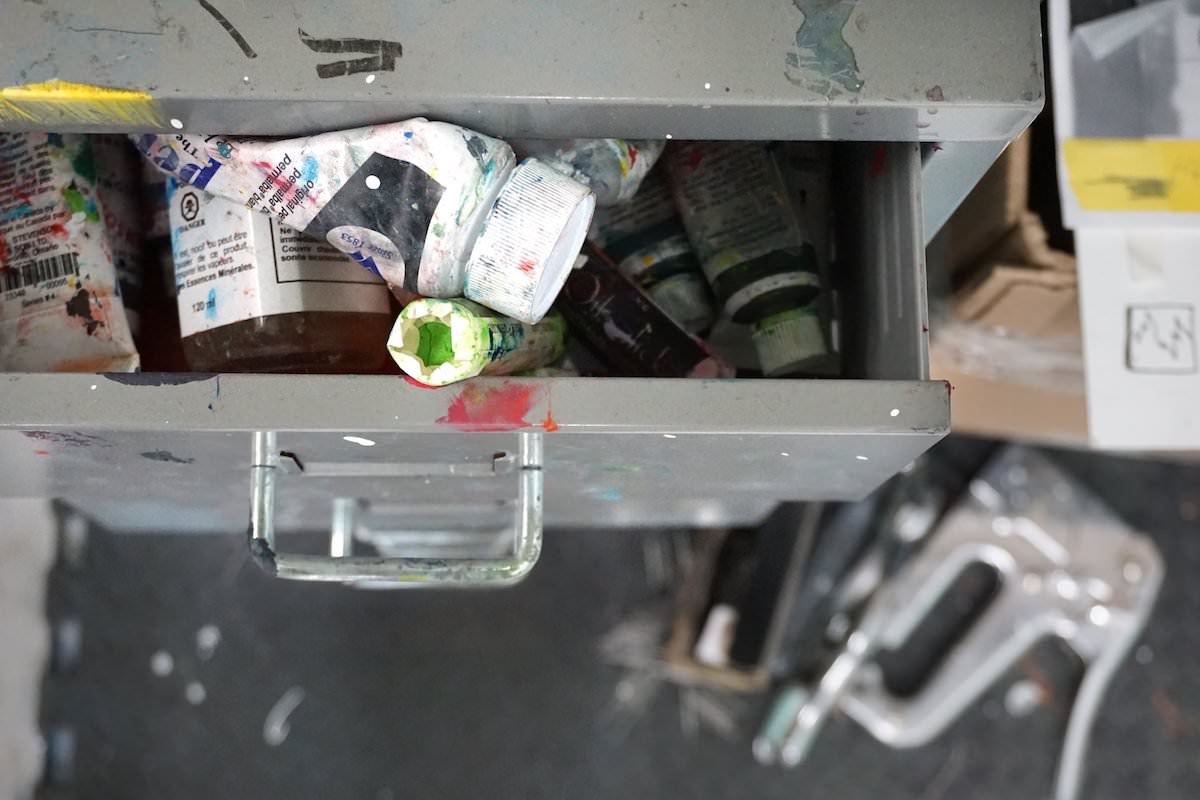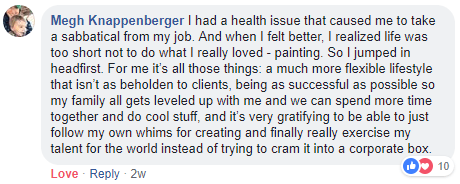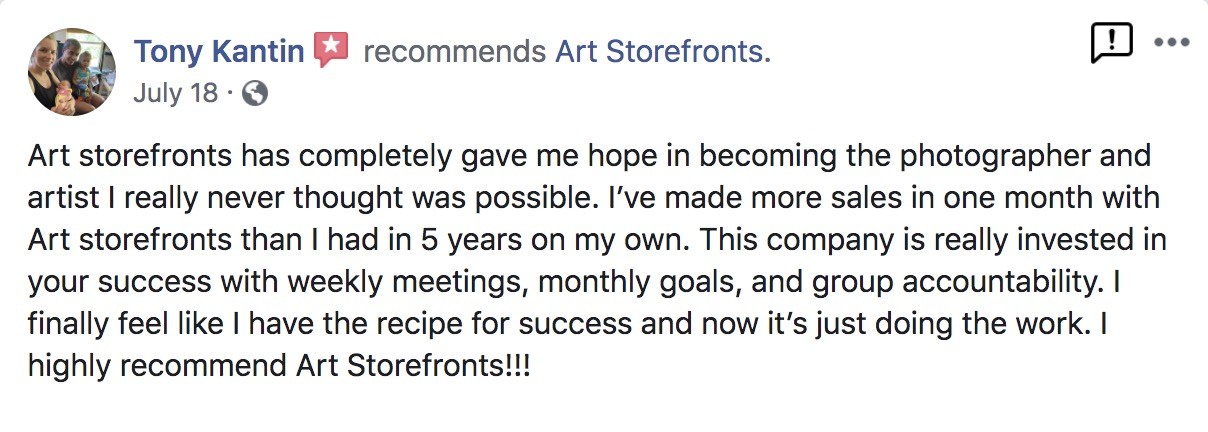8 Things Art Marketplaces Don't Want You to Know
If you know anything about art marketplaces, it's probably that they're free and easy to use.
Why?
These two features are hard to ignore, as they're the primary things marketplaces advertise about their services. They're the main things they want you to know.
But if it really was free and easy to sell art online, wouldn't every artist you know be succeeding at it? Wouldn't you be succeeding at it?
Instead, after investing time and energy into building profiles on 1, 3, or 10 marketplaces, most artists end up with very few sales and nothing to build a business off of - not even a list of their customers' email addresses.
The process takes years and leaves many fine artists scratching their head and wondering, is Etsy even worth it? Fine Art America? Saatchi?
So, if even what they want you to know doesn't lead to any actual success for many...what are the things they don't want you to know?

1. You don't own your customer info and data
This is in the #1 spot because it is so, so critical to understand.
You cannot build a thriving business (of any kind) without customer data.
Without it, you're trying to build an entire art business purely from one-off purchases. Because if you're not able to market to your buyers in the future (by putting them on your email list, for example), then your only hope to win additional business from that buyer is that they will remember your name and look you up on their own.
Of course, this is not exactly likely with an internet full of art to discover.
No, to turn your buyers into collectors and win repeat business (the easiest sales to make!), you need and deserve full access to your own customer information.
If you don't get it on a marketplace, that alone should tell you you will never build a consistent business there.
But let's push on...

2. They are stealing your traffic
Yes, seriously.
Here's how it works: someone Googles your name or your niche and one of the first results is your profile on an art marketplace.
Great! Sort of.

The problem is, this fact is very hard to reverse. Even after you stop selling on a marketplace, your images and name continues to be optimized there and they continue to own a portion of your traffic.
Later on, if you decide to take matters into your own hands and run your own gallery online, you'll be competing in SEO against your previous marketplace profiles.
If this topic concerns you, we wrote a whole blog post about it.

3. You're doing the marketing for them
This ties right into #2. All the effort, time, and money you put into your marketing - posting on Instagram, sharing stories about your work on Facebook, sending emails to an email list, running Ads on Facebook...
ALL of this traffic and interest is being driven right into the hands of the marketplace where, like we mentioned before, they then do their best to turn your customer into their customer.
They don't care if you sell your art or not, because simply by creating a profile on their service they've already won.
The hard work you put into marketing should be yours alone to benefit from.

4. Other art is one click away
When a visitor lands on your profile, they are being exposed to a ton of distractions.
Recommended artists widgets, popular paintings, seasonal offerings. Buttons, links, and images all over that aren't your art.
The visitor at that point is as likely to look at your art as they are to wander off and find someone else's work to buy.

And the marketplace doesn't care - why would they? As long as they keep the sales coming in through their platform, the specific artist doesn't matter at all.
This is why they put in so much effort to optimizing your name for search engines - not to help you win sales, but to bring people onto their platform and feed them as much art as they can until they buy something - anything.

5. The cheapest art wins
Have you ever wondered what motivates buyers to pay a higher price for one piece of art than they would for a different one?
Emotional connection. Art collectors want art that means something to them. There is huge value in that.
Building emotional connections with your audience is how the game is played - it's how you'll turn your fans into customers and your customers into repeat customers.
However, this process takes time. You might first connect with a buyer through your website, then they follow you on Instagram, 6 months later they finally have an open wall space and because they've been seeing your posts this whole time, they make a purchase.
None of this is possible with marketplaces. It's all first impression - no follow-up.
In other words: it becomes about price.
A marketplace customer is looking for a painting of a boat for their office, so they search "boat painting" and check out the results. They see yours priced at $450, and they see a similar piece at $299.
What incentive do they have to choose yours?
OUR LATEST FEATURE
Live Preview with Augmented Reality
Now anyone, anytime, anywhere - can try out your art on their walls.

6. You are subject to algorithm changes
This is a problem for a ton of fine artists we talk to.
You're doing okay, selling a couple of prints a month, and then...nothing. What happened!
The marketplace changed their algorithm (to bring in more sales to the platform) and you got shafted. Now, your boat painting no longer shows up on the first page, it's on the 4th page.
These changes can happen at any time, and can turn an okay business into a failing one. Your fate is in their hands.

7. It's easy to get lost in the fray
If you have a common name, or create art in a common niche, it can be almost impossible to rise to the top and become visible on marketplaces.
Even if you are the most purely creative, technically accomplished painter that is currently selling art featuring boats - you're still tossing your incredible work onto an enormous pile.

A pile driven by a race to the bottom: price.
Don't depend on someone finding you on page 17 of search results. The most effective way to grow your art business is by marketing your art directly to buyers - not by counting on them to come to you.

8. It is impossible to earn a livable income
This one may sound like a bold, blanket statement to make - but in all of our experience (conversation with literally 10's of thousands of artists) we have never spoken to an artist earning a living from a marketplace. Not one.
So, perhaps it is technically possible - in the way that it is technically possible to become the next Brad Pitt - but from everything we've seen, it is effectively impossible.

So, what's the alternative?
At this point you're probably thinking: so there are tons of downsides to marketplaces, but what other option do I have?
Well, the alternative is to run your own art gallery, online.
It's not free, it's not as easy, but it actually works.
It's the secret behind most artists that are out there actually earning a living from their art - enabling them to quit their 9-5, save for retirement, travel, and more.

Megh sold $200k+ in her first year of running her own art gallery online. Hear more in this interview.
To better explain the difference between marketplaces and online galleries, we made this handy video:

How is Art Storefronts Different Than Marketplaces?
We're glad you asked.

Artists looking to earn a living from their work are business owners. There's no getting around it.
And, like any business in any industry, smart decisions have to be made in order for the business to become sustainable, profitable, and self-reliant.
Is a marketplace really the smartest choice for your business?
Art Storefronts Is the All-In-One Art Business Solution
We help photographers and artists open and run their own art gallery business, online.
Your Own Website
Best-in-class software built from the ground up specifically for photographers and artists.
Back Office Tools
Spend less time on paperwork, and more time creating.
A Marketing Plan
Skip the frustration – we'll teach you what's actually working for photographers and artists.
What Our Customers Are Saying



Sell More Art With Augmented Reality
An augmented reality tool purpose-built for artists and photographers. You'll sell more art than ever when your buyers can see what your work will look like on their walls – straight from your website (no app downloads required!).
Get Art Marketing Advice Sent to Your Inbox
Enter you email address below and we'll keep you up-to-date on all the latest and greatest art marketing strategies and tactics.



